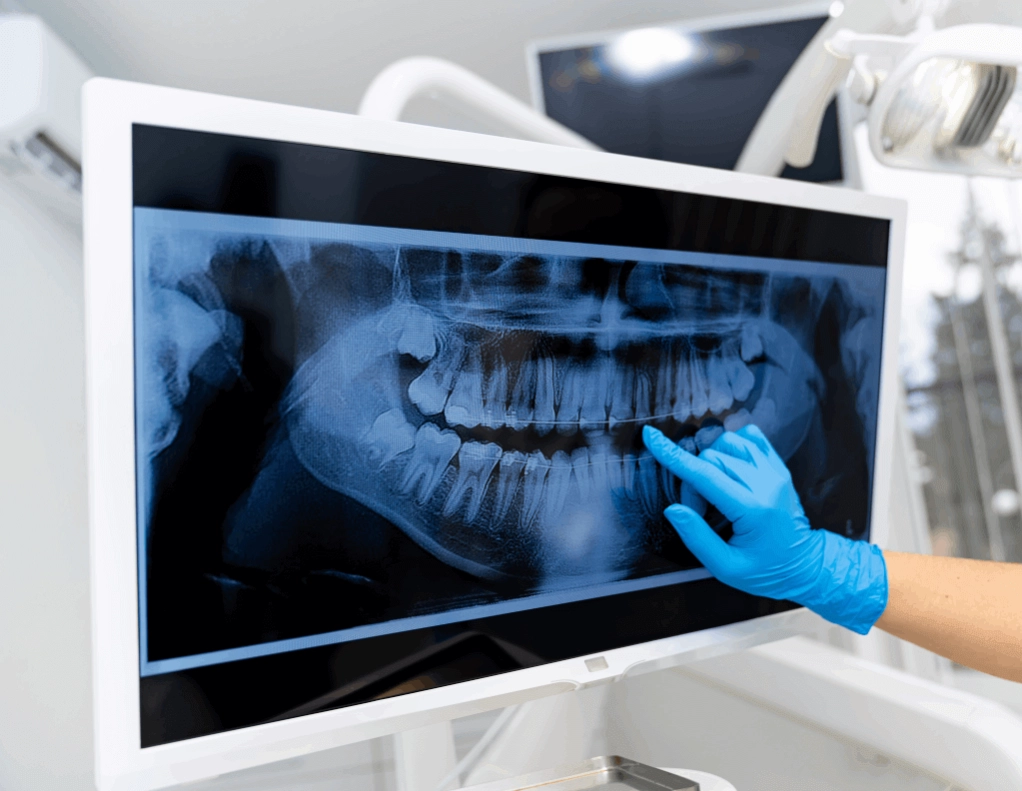
Digital X-Rays
Most dental issues don’t start with obvious signs. Pain, sensitivity, or visible damage often show up late in the game. That’s why X-rays remain such an essential part of modern dental care; they reveal what the eyes can’t see.
The use of digital X-rays goes beyond this. Compared to the outdated film-based systems, they are quicker, crisper, and kinder. The outcome? With far less guesswork and frequently more precision, we are able to identify minor issues before they grow into bigger ones.
What Makes Digital X-Rays Different?
Although the procedure appears straightforward, there are several layers of advantages. Digital x-ray take high-resolution pictures instead of film, and they show up on a screen nearly instantly. This speed makes it possible to discuss issues in real time, such as an infection close to a tooth's root, a change in bone levels, or the early symptoms of a cavity.
There’s no waiting, no darkroom, and no chemical processing. And the images themselves are easier to interpret, even for patients who aren’t used to seeing dental scans.
Less Radiation, Greater Clarity
One of the biggest questions people ask about X-rays is whether they’re safe. With digital imaging, the answer is a reassuring yes. These scans use significantly less radiation than traditional dental X-rays, often up to 80% less, while delivering a much clearer picture.
And that clarity matters. It means early-stage cavities don’t go unnoticed. It means we can plan treatments with better precision. And it means we can track changes in your oral health over time with greater confidence.
Comfortable and Chemical-Free
If you’ve ever had a film X-ray, you might remember the awkward bitewings or the uncomfortable tray pressing into your mouth. Digital x-ray are slimmer, more flexible, and designed to be a lot more comfortable.
They’re also cleaner, both for you and for the environment. Without film or harsh chemicals involved, there’s nothing to dispose of, and no lingering chemical smells during your visit.
What Are We Looking For?
Digital X-rays play a supporting role in a variety of situations. Depending on the type of scan, we might use them to:
- Catch cavities that aren’t yet visible during a visual exam
- Examine bone density around existing teeth or dental implants
- Check the roots of teeth before restorative procedures
- Monitor how wisdom teeth are developing
- Identify infections beneath the gumline that aren’t causing symptoms yet
Sometimes, a patient may feel perfectly fine, and still have something brewing below the surface. X-rays help bring those quiet issues into focus before they turn into painful problems.
Keeping the Full Picture in Mind
Dental care isn’t just about what we see; it’s about what we don’t want to miss. Digital X-rays help fill in those gaps. They provide a fuller, clearer view of your oral health, allowing for decisions based on facts, not just symptoms.
They’re quick, low-risk, and more precise than ever, and they help us offer the kind of care that’s proactive, not reactive.
we are having a 3D scan system for CBCT you can add a photo of our machine ( below you will see what the system is and what it. Please feel free to incorporate some of those elements into the X-Rays treatment
A 3D scan system for CBCT (Cone Beam Computed Tomography) is an advanced imaging technology used in dentistry, orthodontics, and maxillofacial surgery to produce detailed three-dimensional images of the teeth, jawbones, soft tissues, and surrounding structures. Unlike traditional X-rays, CBCT provides comprehensive 3D views, enabling precise diagnosis and treatment planning.
Key Features of CBCT 3D Scan Systems:
- High-Resolution Imaging: Captures detailed 3D images with clarity and precision.
- Low Radiation Dose: Designed to minimize exposure while providing comprehensive imaging.
- Rapid Scanning: Usually completed within seconds to a few minutes, depending on the system.
- Versatile Applications: Used for implant planning, orthodontics, endodontics, temporomandibular joint (TMJ) analysis, and pathology detection.
- Advanced Software Integration: Allows for 3D visualization, measurement, and virtual treatment simulations.

